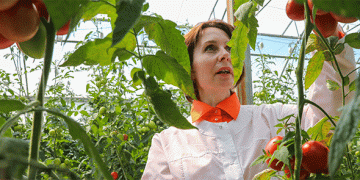In the plum sector, domestic offerings have dominated, with various top varieties and Cacaks varieties forming the core of the supply. The Bühler Frühzwetschge variety has seen increased presence, while the Katinka variety has become less prominent. New additions to the market include Ersinger Frühzwetschge, Fellenberg, and Auerbacher. These varieties are competing with a mix of Eastern European imports, particularly the Lepotica and Stanley varieties from Bosnia and Herzegovina, and the Republic of Moldova. Supplementary batches from France and Italy have also contributed to the market.
Despite this diversity, the quality of the plums has been inconsistent. Many domestic batches, in particular, have not met taste expectations, leading to a broad price range in some markets. Premium products, while sought after, have been scarce, further influencing market dynamics.
The mirabelle market has also shown varied performance. In Frankfurt, the initial Aprimira mirabelles were priced at €17.50 per 5 kg box, while Bellamira mirabelles were available at €2.50 per kg. In Cologne, the first domestic mirabelles were priced at €5 per kg but received little attention from buyers.
Quality and Pricing Trends
The general trend observed is that the quality of both plums and mirabelles has not been consistently high. This inconsistency in quality has created a wide price range for plums, with exclusive products being particularly rare. For mirabelles, the high prices of early-season varieties in some regions contrasted with the lower prices and less favorable reception of domestic fruits in others.
The presence of imported fruits, particularly from Italy and Spain, has influenced the market by providing alternatives that sometimes offer better quality or more stable pricing. French imports have also added variety to the supply, although they have not significantly altered the overall market dynamics.
Implications and Future Outlook
For farmers and industry professionals, understanding these market trends is crucial for making informed decisions about production and marketing strategies. The fluctuations in quality and pricing suggest that there is a need for improved quality control and better alignment of supply with market demand. Additionally, the varying reception of domestic versus imported fruits underscores the importance of differentiating products through quality and unique selling points.
To address these challenges, industry stakeholders should focus on enhancing fruit quality through better cultivation practices and investing in research to improve varieties. Monitoring market trends and consumer preferences will also be essential for adapting to changes and seizing opportunities in both domestic and international markets.
The plum and mirabelle fruit markets are currently facing challenges related to quality and pricing variability. While domestic products continue to be a significant part of the market, there is a clear need for improvements in quality and strategic adjustments to remain competitive. By addressing these issues and leveraging market insights, farmers and industry professionals can better navigate the complexities of the fruit market and enhance their business outcomes.
































